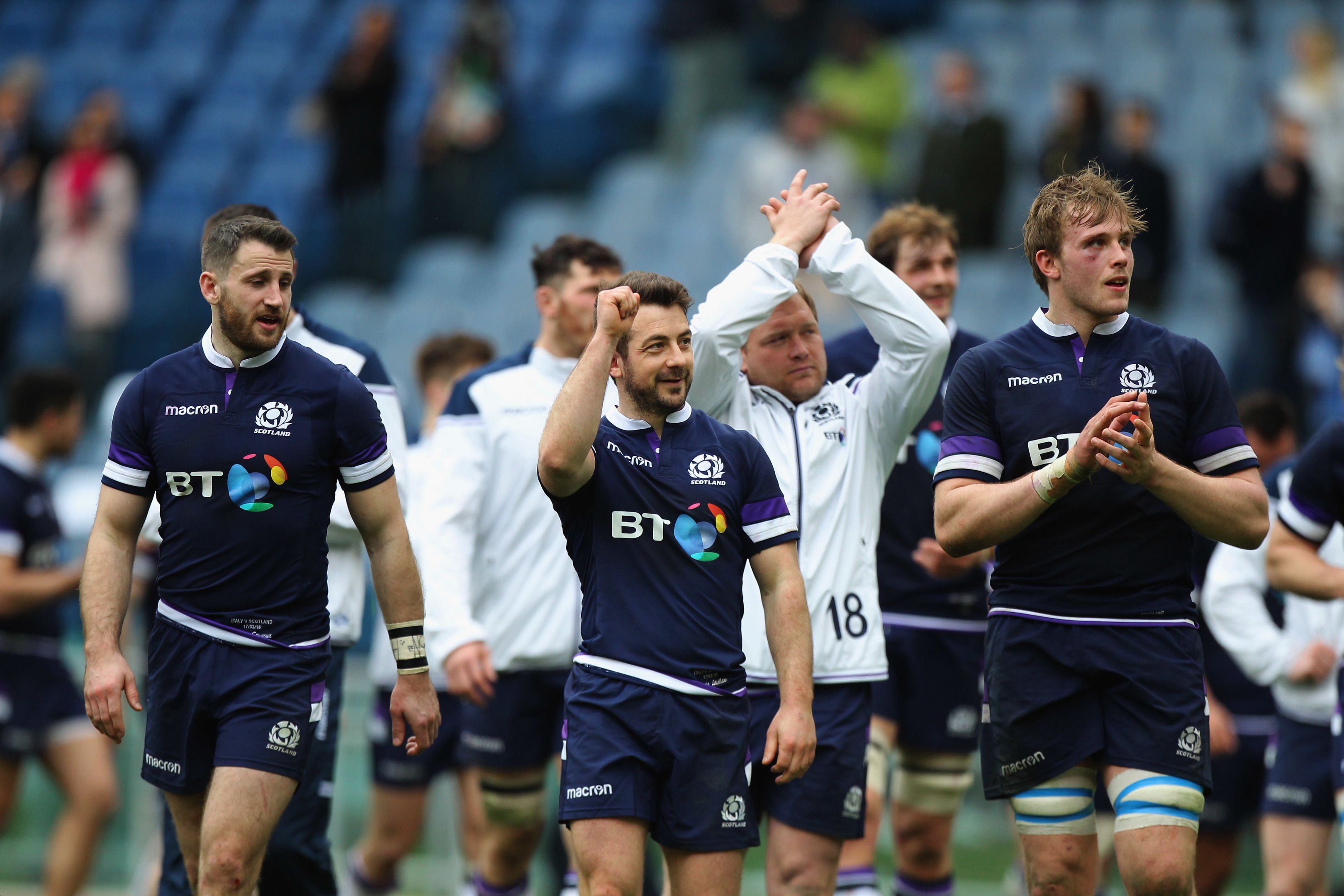
SCOTLAND’S Six Nations campaign came to a stuttering, but thankfully winning conclusion in the Eternal City yesterday.
A last-minute penalty spared Gregor Townsend’s men some blushes but an impartial observer would feel that the home team were robbed of victory.
The Scottish coach had made a number of changes for the visit to Rome and those changes had a material impact on Scotland’s form.
In came Tim Swinson, who was often a key ball carrier, but whose primary gear was reverse as he was knocked backwards by an aggressive Italian defence.
Fraser Brown replaced Stuart McInally – the latter Scotland’s best and most-consistent player since the summer.
The lineout stuttered and the forwards really missed McInally’s abrasiveness until he came on at half-time.
There was a new midfield as well and while Nick Grigg offers something that Peter Horne will never do, Scotland’s greatest attacking threat came from their forwards when the game was slowed down.
Ireland beat England to win Six Nations grand slam on St Patrick’s Day
Most critical was the breakdown, where Italy competed fiercely and dominated.
Scotland lacked momentum going forward in the first 40 minutes and when they were brought to ground, either Italy slowed things down, or Greig Laidlaw did. It was not what Townsend would have wanted.
Scotland were simply outplayed by an Italian team, desperate to secure a victory which would have silenced critics who suggest they are not worth their place in the tournament.
The Azzurri defence was far more aggressive, their line speed faster and their ball carrying more purposeful for long periods of the match.
They wanted it more than Scotland, who looked a shadow of the team that defeated England and France at home.
Scotland didn’t even create the chances that they did in Dublin – it was a poor, poor performance.
Yet at the end of the day, Scotland ground out a victory.
After time trying to play a game that suited Italy, they discovered that their driving maul was their most potent weapon and they used it well.
It may not have been pretty, but ultimately it was effective. Scotland finish the tournament with three victories, but with question marks as to whether they have really progressed.
The hallmarks of their coach are stamped firmly on the team.
Sometimes you need to grind out matches, playing away from opponents’ strengths rather than into them.
A ‘Plan A’ with no ‘Plan B’ is not a great plan and at times Scotland look one dimensional – Gatland read them perfectly as did Joe Schmidt.
With a Rugby World Cup looming, there is still a good deal of work for Townsend to do with this team if they are to be serious contenders.

Enjoy the convenience of having The Sunday Post delivered as a digital ePaper straight to your smartphone, tablet or computer.
Subscribe for only £5.49 a month and enjoy all the benefits of the printed paper as a digital replica.
Subscribe